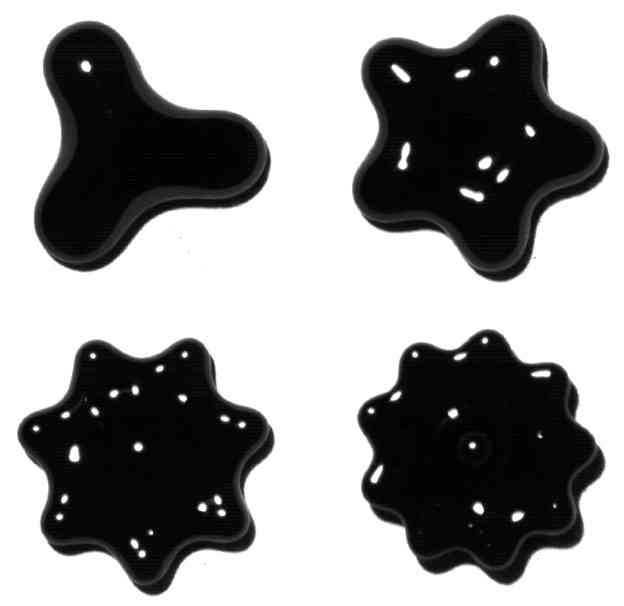
URL: http://journals.aps.org/prfluids/abstract/10.1103/PhysRevFluids.1.021901
Abstract:
We report an experimental
study of a magnetic liquid drop deposited on a superhydrophobic
substrate and subjected to vertical vibrations in presence of a
static magnetic field. It is well-known that a flattened drop of
usual liquid displays oscillating lobes at its periphery when
vibrated. By adding ferromagnetic nanoparticles to a water drop
and varying the strength of the magnetic field, we are
experimentally able to efficiently tune the resonant frequencies
of the drop. By using conservation energy arguments, we show
that the magnetic field contribution is equivalent to adding an
effective negative surface tension to the drop. Our model is
found in good agreement with the experiments with no fitting
parameter.
 French newspaper
"Le Monde", June
15, 2016, "Cahier Sciences & Médecine " p. 6 by "Des
étoiles noires sur commande" (in french)
French newspaper
"Le Monde", June
15, 2016, "Cahier Sciences & Médecine " p. 6 by "Des
étoiles noires sur commande" (in french) CNRS Research News "Contrôler
les oscillations d’une goutte d’eau grâce à des
nano-particules magnétiques", 24 October 2016,
CNRS Research News "Contrôler
les oscillations d’une goutte d’eau grâce à des
nano-particules magnétiques", 24 October 2016, Electronic
Letter "En direct des labos" 25 October 2016 (in
french)
Electronic
Letter "En direct des labos" 25 October 2016 (in
french) Tweeter_@INSIS_CNRS
25 October 2016 (in
french)
Tweeter_@INSIS_CNRS
25 October 2016 (in
french)